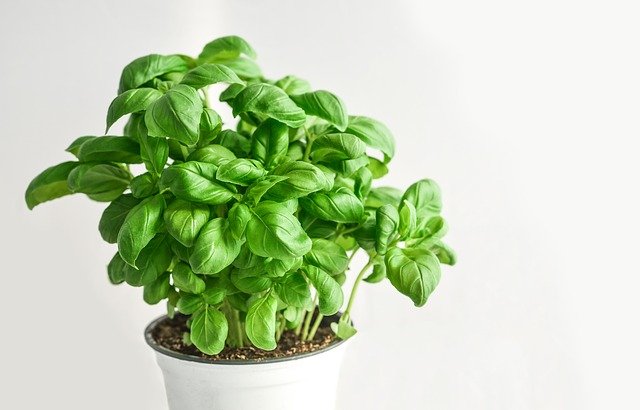Basil Description
Basil plants belong to two closely related genera called Basilicum and Ocimum; and Labiatae family.
The common name is basil and this plant can be grown from seed indoors in a pot.
The Basilicum americanum L. species is widely grown and distributed in West Africa.
Basil’s natural habitat is a moist, rich soil that’s not waterlogged and is exposed to sunlight.
It is a low growing plant with small fruits.
Ocimum viride Willd has large lightly serrated leaves.
They are rough in texture and 8 to 10 centimeters long.
It is a bushy plant as much as 2 meters high.
The small flowers are arranged in terminal spikes. Both species originated in Africa.
The plants have a strong fragrant smell and are slightly pungent.
Their leaves are more or less lanceolate, sometimes serrate.
The small white, pink, or yellow flowers are arranged in terminal spikes.
The seeds are small and dark. Basil plants thrive in full sunlight.
The African species withstand drought and poor soils.
Propagation is by seed, and sometimes by cuttings.
Nitrogen dressing is necessary to encourage vegetative growth.
Harvesting and Storage
When flowering begins, plants are often pruned to encourage lateral branching.
It’s easy to prune basil leaves, just wait till the plant grows to about 20cm before you trim the leaves.
Pruning it will encourage more leaves to shoot out.
It will also make the plant grow fast in a matter of weeks.
The basil leaves can be harvested 80-110 days after planting.
The leaves can be stored, by sun-drying and if desired, crushed and ground into powder.
They can then be kept in dry containers. The leaves and young shoots are used as flavor sources.
Uses and Health Benefits
Basil, also known as great basil is a herb that is used in cuisine and has several uses and medicinal purposes.
it is a rich source of vitamins, minerals, and good fats.
The leaves contain vitamin A, B5, C, K, Calcium, Iron, Manganese, Magnesium, and other MAcro and Microelements.
The leaves are used in cooking, making salads, and tea.
It can be used in preparing tomato sauce, vinegar and the dried salads can be used as well in different forms of delicacies.
They may also be made into remedies such as infusions for coughs and headaches.
Basil is also used in the concoction to enhance food appetite, bloating, stomach spasms, and kidneys.
Some of the health benefits are already backed by research papers.
The plant yields basil oil is used in the perfume industry and for scenting soaps.
The basil essential oil is generally used in making cosmetics and it’s good for the skin.
The oil is used in open wounds, and against skin infections.

Growing up in a family deeply rooted in agriculture, I developed an early passion for cultivating the land, caring for animals, and exploring sustainable ways to improve farm productivity.
I’ve worked extensively across multiple areas of agriculture, food and cash crop cultivation, poultry farming, fish farming etc.
At FarmPally, I enjoy sharing practical insights drawn from real-life experiences to help farmers, pet owners, and agriculture lovers make informed, and sustainable decisions.

